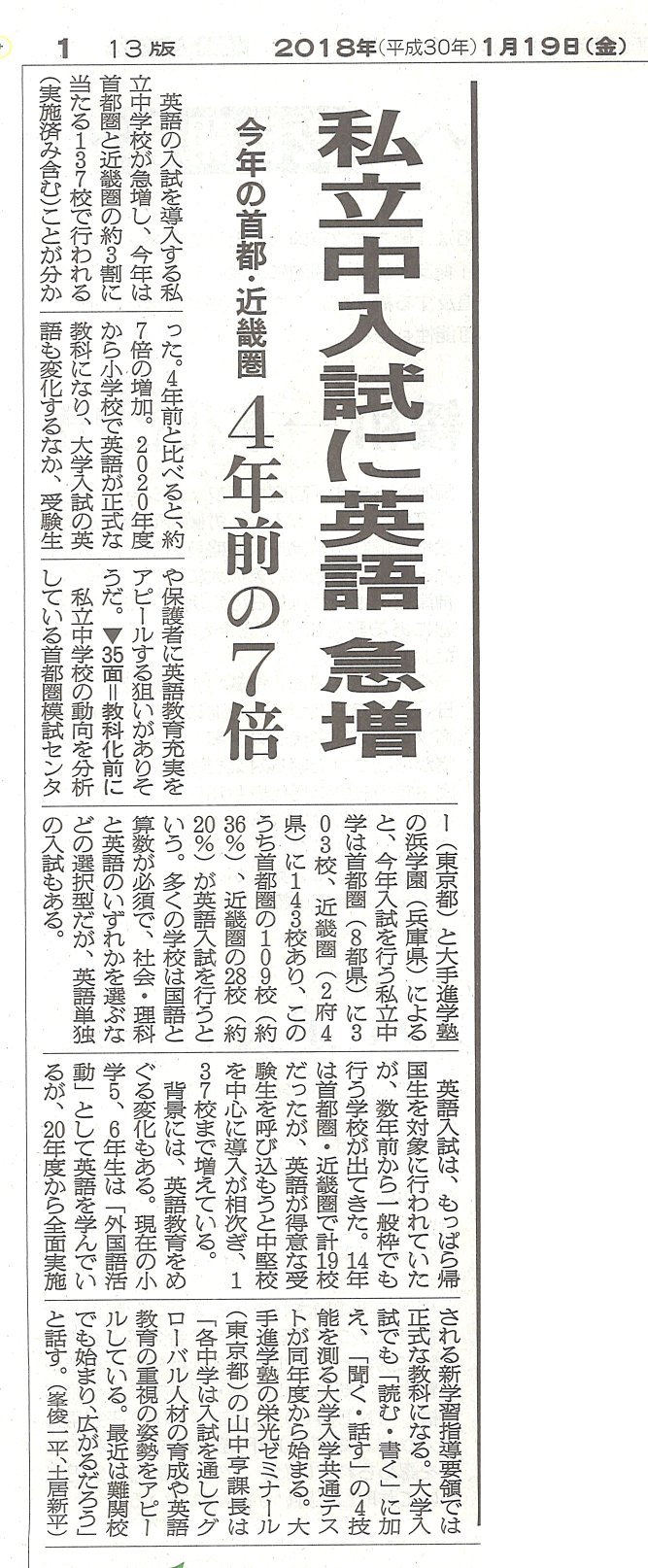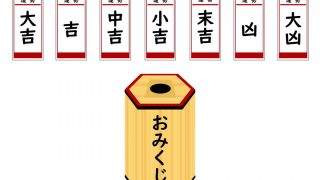リオでのオリンピック。毎日熱い戦いが続いています。それにしても日本人の活躍が眩しいですね。毎日、感動をもらっています。
昨日の男子400mリレー決勝は、見ていて鳥肌が立つくらい興奮しました。
https://youtu.be/2RWr2KwBoIY
世界最速と言われるジャマイカのボルト選手に迫る走り。西欧の選手と身体的にも劣ると言われながら銀メダルです。銀以上はトラック種目で史上初とのこと。今回のオリンピックで目立つのは日本のチームワーク。男子体操の金メダルに始まり、卓球男子団体銀メダル、卓球女子団体銅メダル、バトミントン高松ぺアの金メダル、シンクロナイズドスイミングの銅メダル、それ以外にも数々の団体競技で日本の若い選手たちの活躍に興奮させられました。
チームの強さは日本の象徴とも言えるでしょう。仲間と供支え合い、仲間がいるからガンバレル、まだ終わってはいませんが、日本はこれまで過去最多の41個のメダルを獲得しています。
かつて電化製品ではNo.1と言われた日本家電。もはや技術だけでなくスポーツにおいても日本の存在は世界の注目を浴びています。
これからの時代を担う若者たちには、日本人として誇りを持ち、世界に気後れすることなく第一線で活躍していって欲しいと願っています。その場合、英語はもはや目的ではなく道具です。
英語で自分の夢が折れて欲しくはありません。語学習得が容易な小さいうちからしっかり英語は習い、若いうち留学をし、世界を視野に活躍する人材に育ってほしいと願っています。
<以下毎日新聞より抜粋>
五輪陸上:男子400mリレー銀 綿密な戦略 最高の結果 – 毎日新聞
登場する際、4人で刀で切る「侍」ポーズを決めた日本。テンションは最高潮に高まっていた。日本はこの4年間、0秒01を縮めるため、細部にこだわって練習してきた。伝統のバトンパス技術「アンダーハンドパス」は2人の距離が近づき過ぎるため、腕を伸ばすことで距離を稼ぐようにし、その感覚を徹底的に染みこませた。バトンを受け渡す位置も2人のスピードの「最大公約数」となるよう計算し、第1走者から第2走者は20メートルあるゾーン内の15〜20メートル、それ以降は10〜15メートルで受け渡すようにした。
走順もこだわった。鍵は第3走者。スタートから徐々に加速する第1走者と違い、カーブを高速で回る走力が必要となる。勝負が懸かるアンカーは気が焦るため、予定より早く飛び出す可能性があり、それに追いつく一瞬のスピードも求められる。日本はここに両方の能力を備える桐生を配置した。
第1走者はスタートが随一の山県。受け手と渡し手の両方を担う第2走者の飯塚はロンドン五輪メンバーでもあり、アンダーハンドパスに習熟している。ケンブリッジは代表経験が浅く、受け手だけの第4走者で負担を軽くし、持ち前の後半の加速力をアンカー勝負に生かそうとした。
針の穴を通すような綿密な戦略を立てて挑んだ決勝。それをきっちり遂行し、結果は最高のフィナーレとなった。【新井隆一】
Precise Japanese runners’ evolving skills lead to Olympic silver in men’s relay – The Mainichi
RIO DE JANEIRO — Japan’s 4x100m relay team of Ryota Yamagata, Shota Iizuka, Yoshihide Kiryu and Aska Cambridge won the Olympic silver medal here on Aug. 19 with a precise performance, surpassing the bronze medal showing at the 2008 Beijing Games.
The team finished in 37.60 seconds, just behind the Jamaicans, who snared the gold with a time of 37.27. Jamaica’s win marked the ninth gold medal for superstar Usain Bolt, who completed a triple-triple — winning gold in the 100, 200 and 4×100 relay for three consecutive games. Canada ran 37.64 to collect the bronze.
Cambridge ran for Japan as anchor. When he took the baton, he was lined up with Bolt, who surged into the lead. It was a dreamlike performance for Japan, chasing the world record holders. The Japanese team even managed to edge past the United States (which was eventually disqualified).
When the Japanese runners confirmed their time on the electronic scoreboard, Cambridge and Kiryu hugged each other in joy. It was Japan’s first ever silver medal in the event.
Japan athletes, who had remained inferior in terms of individual ability, had focused on perfecting technique in the baton pass, and adopted an upsweep exchange, in which the receiver’s palm faces down and the incoming runner swings the baton up into their hand. This enables the receiver to maintain a form close to their natural running position without losing much speed.
In 2014, a new sporting event, the IAAF World Relays, emerged, giving participants the chance to qualify for the Olympics and world athletics championships. Accordingly, track and field champion Jamaica and European countries have started putting effort into baton training. As a result, Japan had been losing its superiority in baton exchanges.
Now however, a new path has started to open for Japan. At the Rio Olympic Games, both Cambridge and Yamagata, who ran first, progressed to the semifinals of the men’s 100 meters. Also running with the team was Kiryu, who holds the second fastest time for a Japanese athlete, at 10.01 seconds. And Japan’s second runner, Iizuka, previously progressed to the 200-meter semifinals at the world championships.
Since Kiryu ran 10.01 in 2013, interest has heighted in who will be the first Japanese athlete to run the 100 in under 10 seconds. And Japanese athletes have been honing their skills to improve their times. These factors have contributed to Japan’s advancement.
During qualification on Aug. 18 — with Bolt on the sidelines to preserve his energy — Japan surpassed Jamaica with a time of 37.68, a new Asian record, and shaved 0.08 seconds off that time in the final.
“The baton is a factor, but the time of each individual runner has been getting faster. The fact that each of us was able to run with confidence is pretty big,” Cambridge said.
Looking at the fastest Japanese team to hit the track, spectators can now hold dreams that were nonexistent for past relay units.
And beyond the evolution that the Japanese athletes showed in Rio de Janeiro was Japan’s first Olympic 4×100 relay medal since 2008. (By Ryuichi Arai, Mainichi Shimbun)







